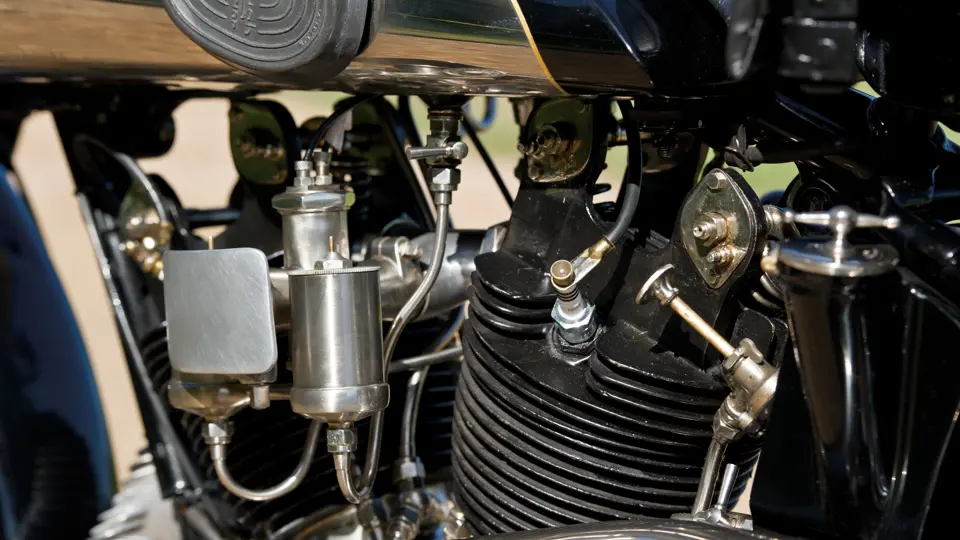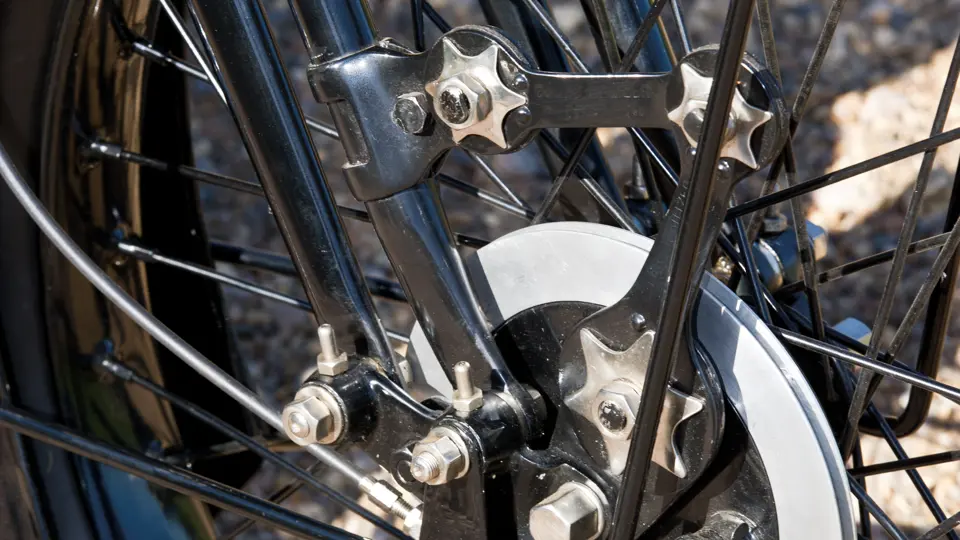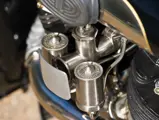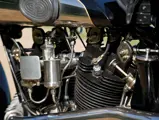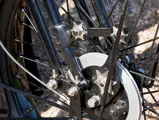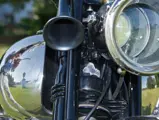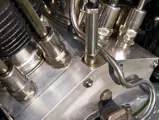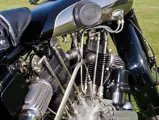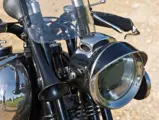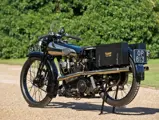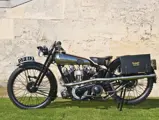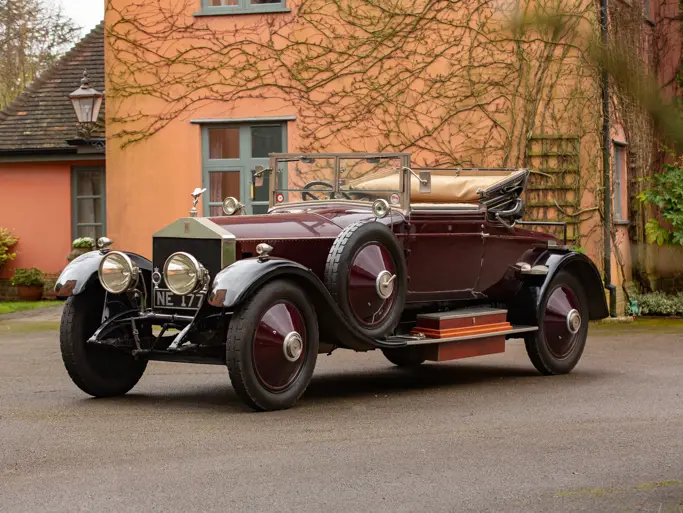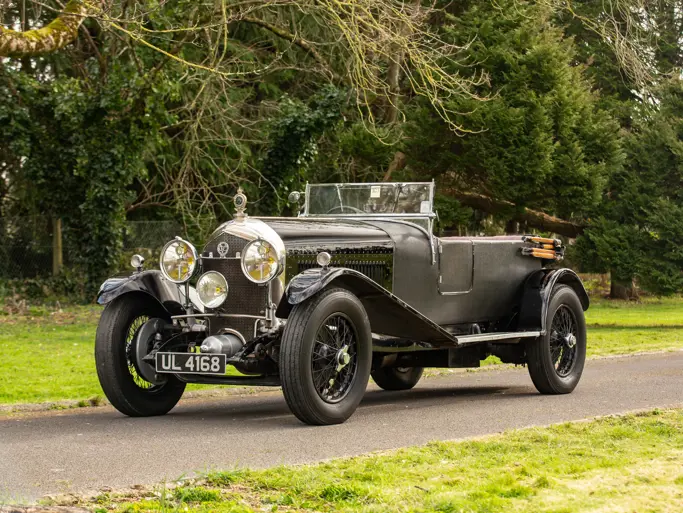8/45 hp, 980 cc OHV V-twin engine, Binks two jet twin float sports carburettor, three-speed counter shaft hand-change gearbox, single centre spring multi plate clutch, Harley-Davidson bottom link front forks, rigid frame, and cable operated front and rod operated rear brakes. Wheelbase: 59 in.
• Fully matching-numbers supported by a Works Record Card
• Known ownership history; listed in the Club Register since its inception in 1964
• Fully documented restoration by marque specialists from 2006–2010
Few, if any, motorcycles can rival the legendary status accorded to Brough Superior. Produced in limited numbers between 1919 and 1940, there was no other motorcycle that could compare with the Brough’s combination of quality, performance, and aesthetic appeal. George Brough was not only an accomplished rider, talented engineer, and designer, but also an astute marketer who, with the agreement of Rolls Royce, was able to describe his machines as “the Rolls-Royce of motorcycles”. Given the performance of the bikes, Brough could have been more aptly associated with Bugatti or Alfa Romeo!
Through his own competition experience and feedback from the greatest riders of the period, including LeVack, Baragwanath, Needham, Storey, Thomas, and Karslake, George Brough was able to create a machine that satisfied the most experienced rider, and the Brough Superior represented the pinnacle of motorcycle technology from that era. Following the success of the 1923 and 1924 SS80 models in competition and production sales, the new SS100 Super Sports model was announced in late-1924, which established their position as the world’s fastest production motorcycle. The SS100 was claimed to be an exact replica of LeVack’s racer, which obtained the world’s fastest solo and sidecar speed records in 1924.
Each SS100 was sold with a guarantee that it had exceeded 100 mph for a quarter-mile on test, and with a frame designed by GWT Hartwell, the SS100 was fitted with a four-cam J.A.P ‘KTOR’ racing engine offering 50% more horsepower than the previous SS80 model. It was fitted with aluminium-finned exhaust manifolds, the pipes being swept to each side, terminating in high-level Carbjector silencers. Front forks were Harley-Davidson under license; Hubs were five-inch Webb fronts and eight-inch Enfield rears, both fitted with aluminium cooling fins. Damping was by Bentley, and Draper Scissor dampers were fitted to the front forks.
In September 1925, a completely redesigned SS100 was announced, and it was to be called the Alpine Grand Sports. This had improved handling via a lower centre of gravity and was in full touring trim. The petrol tank was of increased capacity, and it was redesigned for petrol only, with oil in a separate tank. A toe brake replaced the earlier heel brake, and the footrests were re-designed and strengthened. The forks were Harley, later changed to Castle’s, and the engine was an 8 horsepower J.A.P Special, a 980-cubic centimetre OHV ‘KTOR’ unit to George Brough’s own specification. Brooks pannier bags were fitted to the rear.
The frame numbering sequence was now changed to a new 800 Series, with suffix ‘A’ added to signify an Alpine Grand Sports model. The 1926 catalogue shows only four models, with the ‘AGS’ being the most expensive of the range at £170. The prototype AGS ridden by George Brough in the 1925 Alpine Trial was given the frame number 801A. It is also interesting to note that frame 808A was purchased in October 1925 by Col. T. E. Lawrence, also known as Lawrence of Arabia, as his fifth Brough. It was this SS100 that was extensively photographed at Cranwell with Lawrence riding it and is the bike with which he famously raced a Bristol Fighter with!
Like the Lawrence Brough, 820A is a 1926 SS100 AGS also manufactured in late-1925 and was dispatched on 21st January 1926 to Frank Hallam, the Birmingham Brough Superior agent. The Works Record Card confirms the following: frame number 820A (RH) (A referring to Alpine Grand Sports; RH referring to taper roller bearing head) and engine number KTOR/T 49351. A letter included in the history file from October 1939 to then owner TS Brown states, “Your engine numbered KTOR/T 49351 is an 8/45 HP OHV racing model which left the works in November 1925 and is therefore a 1926 Model”. The works record also indicates that 820A was supplied with carrier and bags and a Karslake side stand. It was dispatched by Midland railway 21st January 1926 to Frank Hallam and subsequently registered in Birmingham on 22nd August 1926 as ‘OP 813’.
The next recorded owner on the surviving continuation registration document is Thomas Sidney Brown, who is known to have owned OP 813 since at least 1939, from the surviving J.A.P Letter. Mr Brown sold the bike to Arnie Clapham, of Yorkshire, in 1962, who neither used nor registered the machine in his name. He did, however, record possession of OP 813 in the first issue of the Brough Superior Register in August 1964. The vendor purchased the bike from Mr Clapham in 1976, together with an original Brough Superior Instruction book, a JAP reference book, and the aforementioned letter from JAP in 1939.
OP 813 was sold in 1979 to a Richard Gulvin, of the Brough Superior Club, who neither used nor registered the machine in his name. The vendor then re-acquired the bike in 2005 and undertook a painstaking restoration beginning in 2006 and ending in 2010. The KTOR engine was rebuilt to its correct specification, and the original cylinder heads, which had been converted to twin plug, were rebuilt to correct single plug specification. Using the rebuilt engine, OP 813 was completely restored from 2009–2010 by a noted Brough Superior specialist. During the restoration, a correct and exceedingly rare original and early five-inch Webb front hub was sourced after the original had been replaced by a larger eight-inch Enfield front brake in a bid to improve the machines stopping power.
During its restoration, OP 813 was exhibited at the Brough Superior Golden Jubilee in August 2008, and in 2010, following its completion, it was awarded the Baragwanath Trophy for the best JAP-Engined SS100 at the annual Brough Superior Club rally. Since 2010, the machine has been ridden sparingly, with less than 100 miles in total.
Those with swept aluminium exhaust coolers and high level exhausts on each side are the most desirable and attractive of all Brough Superior models. Very few survive and they rarely change hands. It is believed that no ‘finned elbow’ SS100 with matching frame and engine numbers and a surviving Works Record Card has ever been made available publicly, and this, therefore, offers a unique opportunity to acquire an early and original Alpine Grand Sports with unimpeachable provenance.

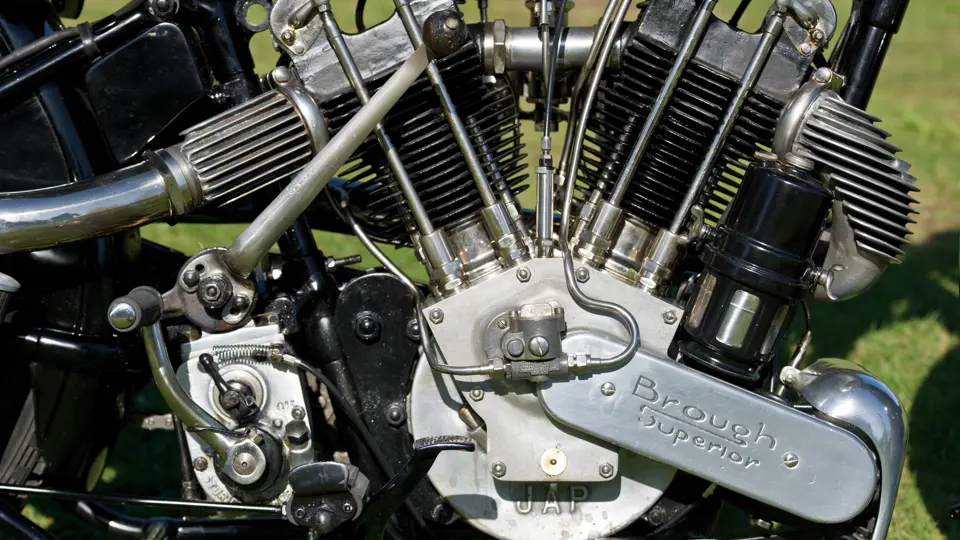


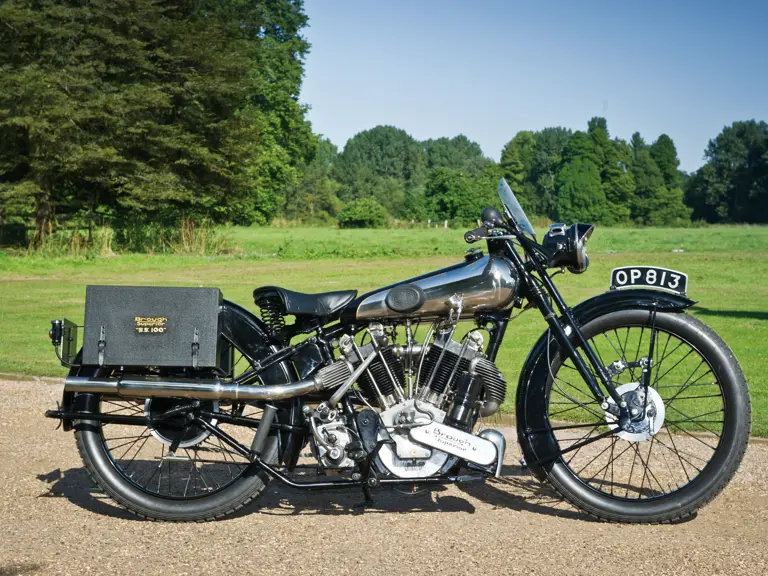
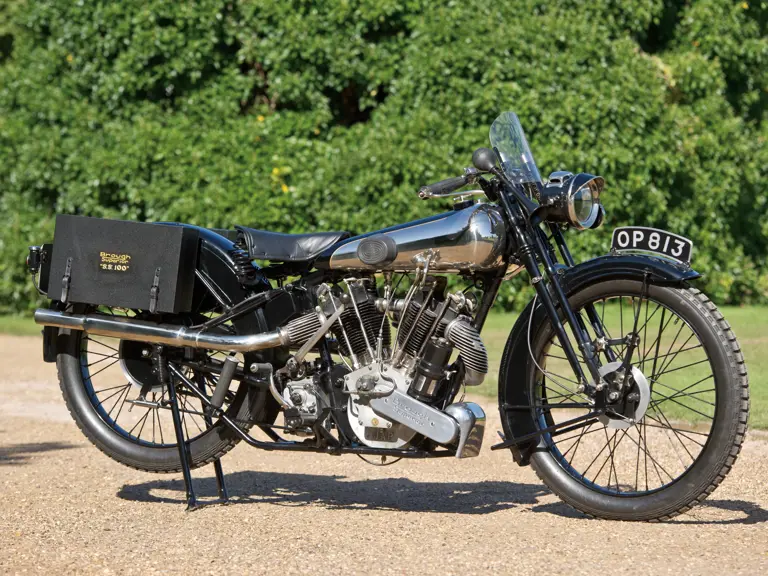
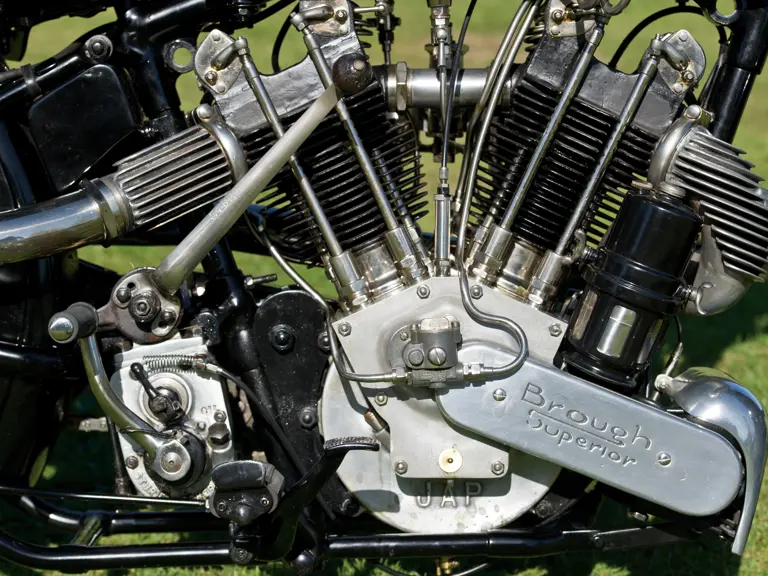
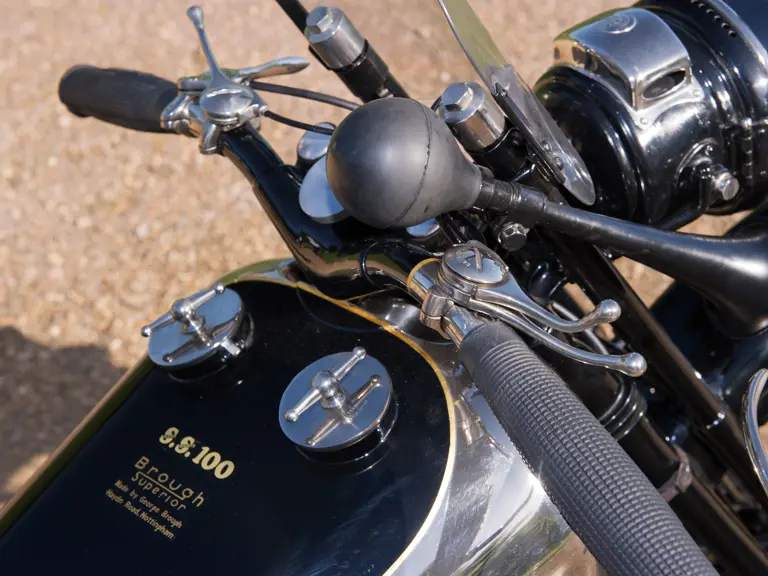
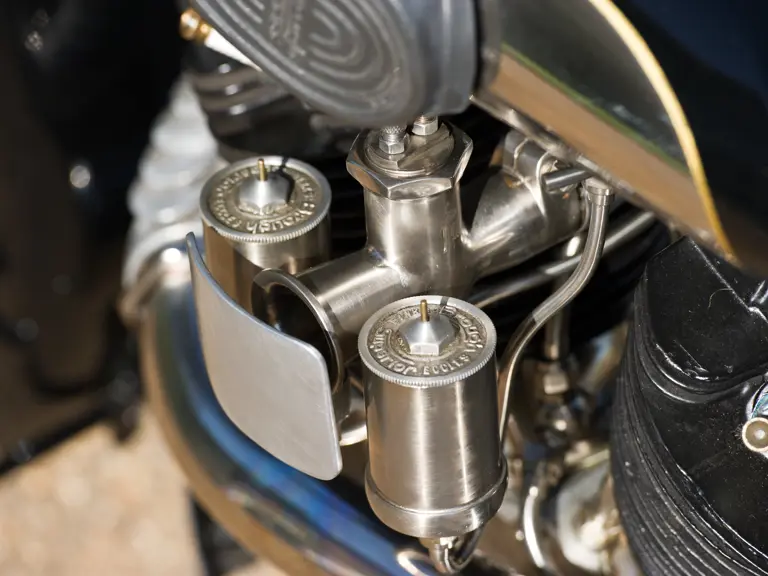
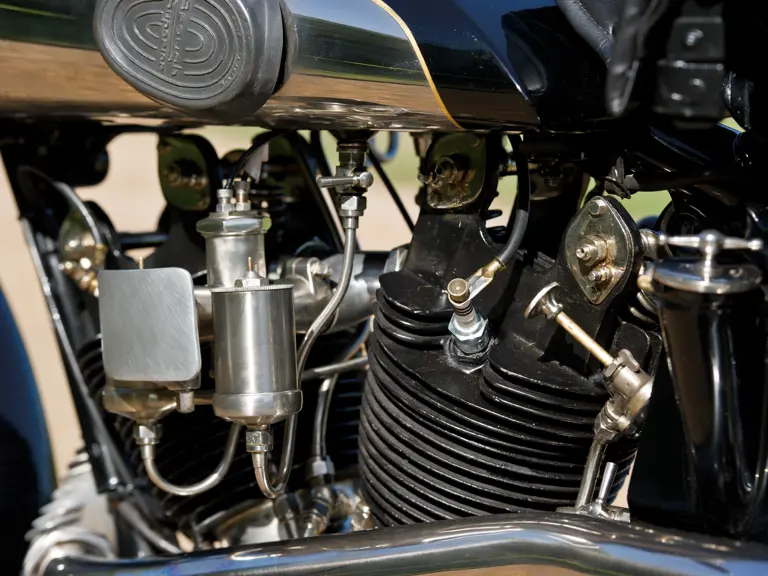
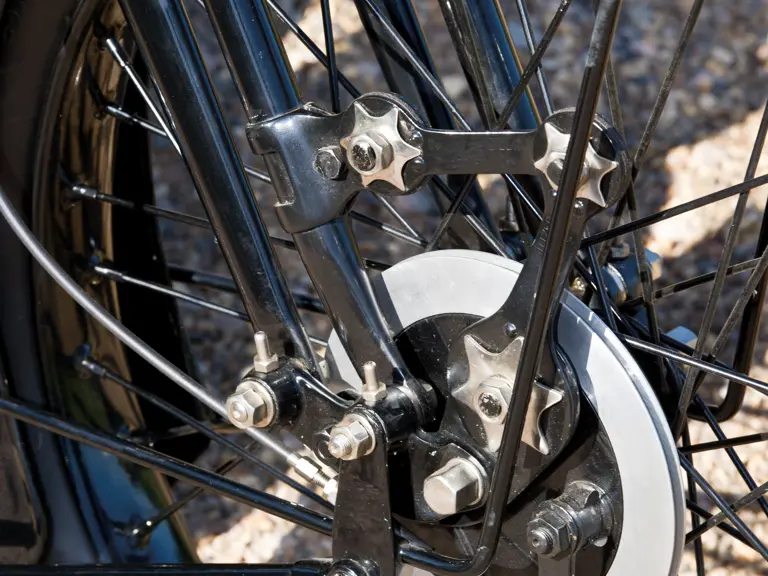
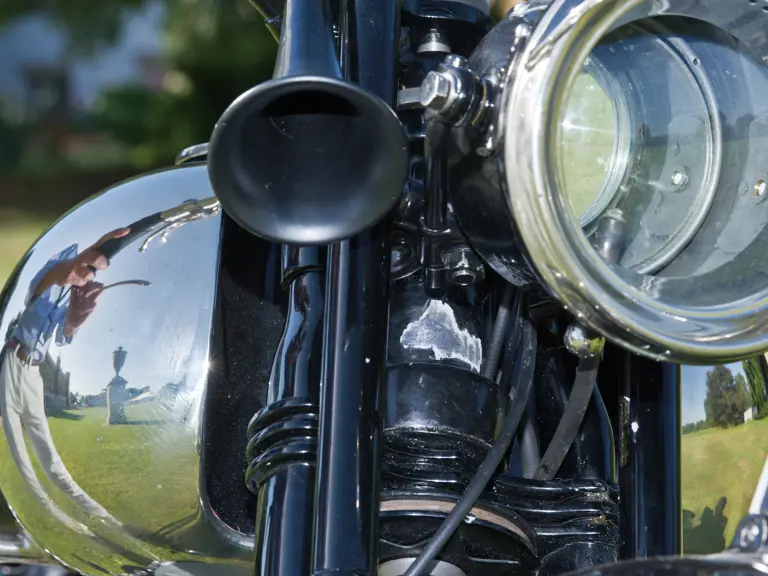
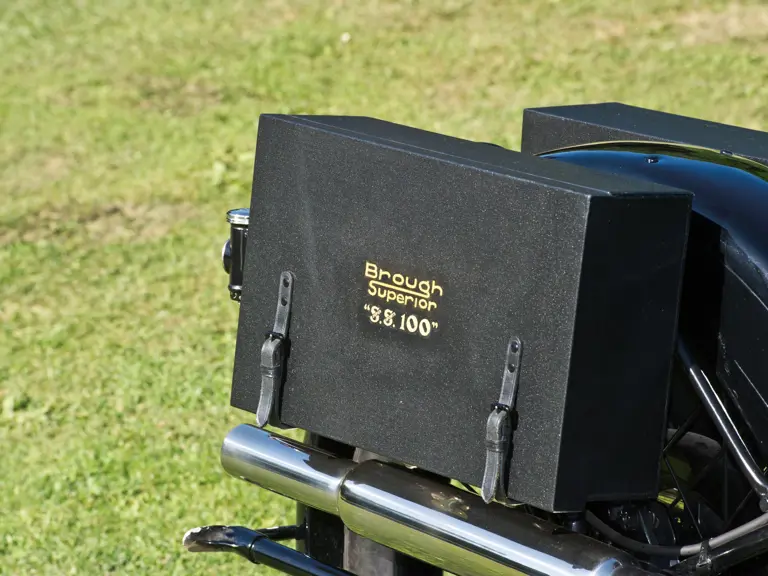
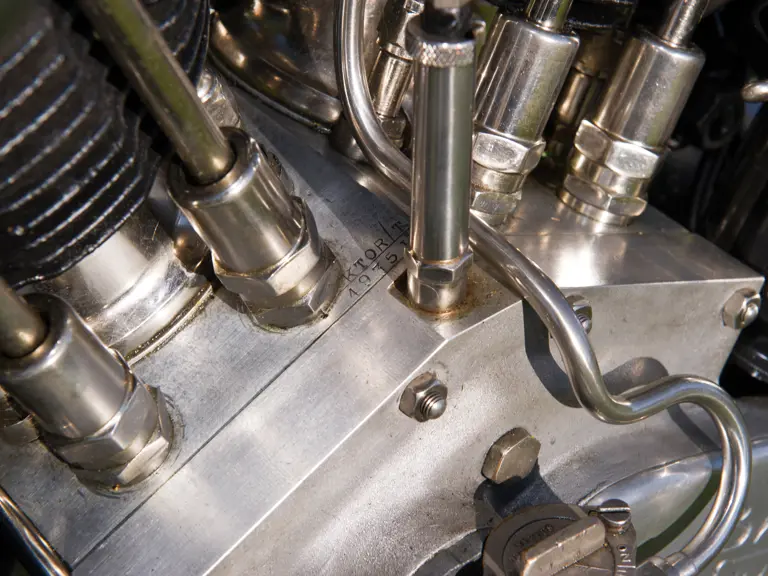

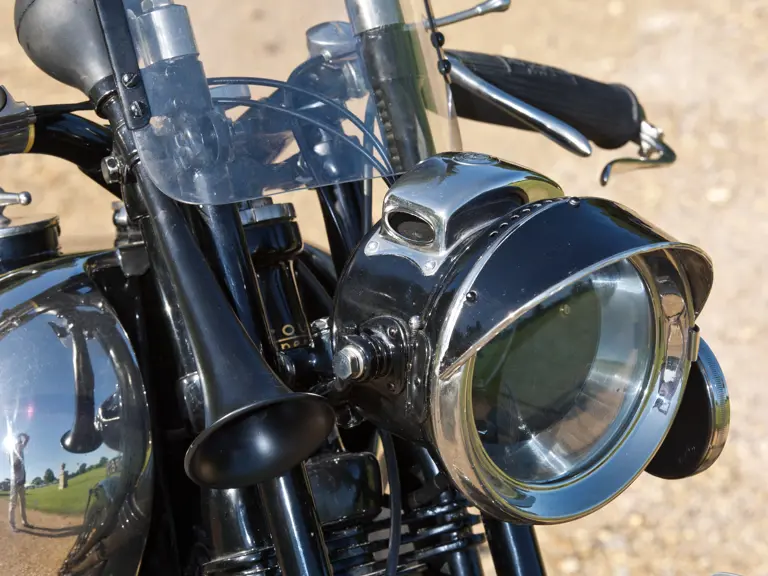
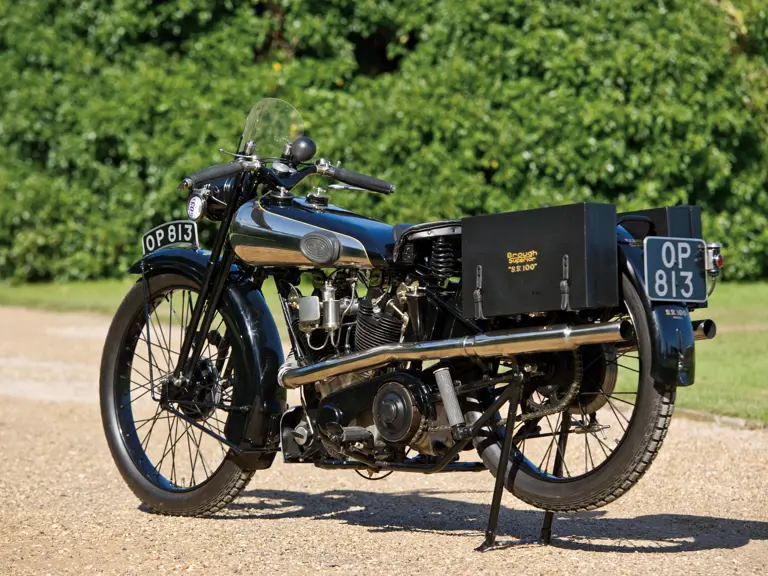

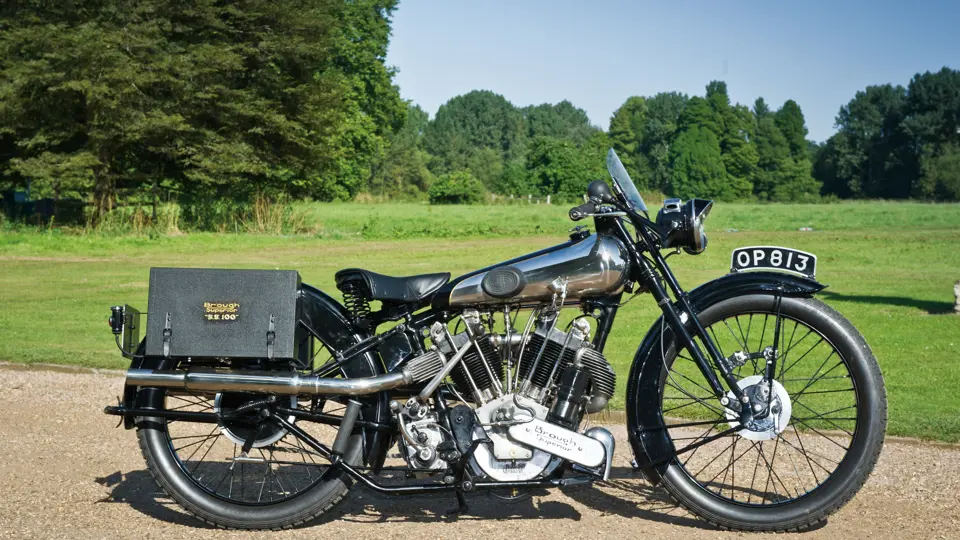
 | London, United Kingdom
| London, United Kingdom

